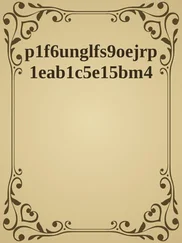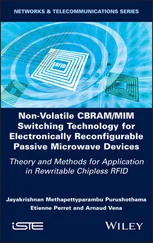Joel P. Dunsmore - Handbook of Microwave Component Measurements
Здесь есть возможность читать онлайн «Joel P. Dunsmore - Handbook of Microwave Component Measurements» — ознакомительный отрывок электронной книги совершенно бесплатно, а после прочтения отрывка купить полную версию. В некоторых случаях можно слушать аудио, скачать через торрент в формате fb2 и присутствует краткое содержание. Жанр: unrecognised, на английском языке. Описание произведения, (предисловие) а так же отзывы посетителей доступны на портале библиотеки ЛибКат.
- Название:Handbook of Microwave Component Measurements
- Автор:
- Жанр:
- Год:неизвестен
- ISBN:нет данных
- Рейтинг книги:5 / 5. Голосов: 1
-
Избранное:Добавить в избранное
- Отзывы:
-
Ваша оценка:
- 100
- 1
- 2
- 3
- 4
- 5
Handbook of Microwave Component Measurements: краткое содержание, описание и аннотация
Предлагаем к чтению аннотацию, описание, краткое содержание или предисловие (зависит от того, что написал сам автор книги «Handbook of Microwave Component Measurements»). Если вы не нашли необходимую информацию о книге — напишите в комментариях, мы постараемся отыскать её.
Handbook of Microwave Component Measurements — читать онлайн ознакомительный отрывок
Ниже представлен текст книги, разбитый по страницам. Система сохранения места последней прочитанной страницы, позволяет с удобством читать онлайн бесплатно книгу «Handbook of Microwave Component Measurements», без необходимости каждый раз заново искать на чём Вы остановились. Поставьте закладку, и сможете в любой момент перейти на страницу, на которой закончили чтение.
Интервал:
Закладка:
Joel P. Dunsmore
Sebastopol, CA
July 2019
Preface to the First Edition
This book is a bit of mixture between basic and advanced, and between theoretical and practical. Unfortunately, the dividing lines are not particularly clear and depend considerably upon the training and experience of the reader. While primarily a text about measurements techniques, there is considerable information about device attributes that will be useful to both a designer and a test engineer, as one purpose of device‐test is to ascertain attributes of devices that do not follow the simplified models commonly associated with these devices. In practice, it is the unexpected responses that consume a majority of the time spent in test and troubleshooting designs, particularly related to active devices such as amplifiers and mixers.
The principle instrument for testing microwave components is the vector network analyzer (VNA), and recent advances have increased the test capabilities of this instrument to cover far more than simple gain and match measurements. As a designer of VNAs for more than 30 years, I have been involved in consulting on the widest range of microwave test needs from cell phone components to satellite multiplexers. The genesis and goal of this book are to provide to the reader a distillation of that experience to improve the quality and efficiency of the R&D and production test engineer. The focus is on modern test methods; the best practices have changed with changing instrument capability and occasionally the difference between legacy methods and new techniques are sufficiently great as to be particularly highlighted.
Chapter 1is intended as an introduction to microwave theory and microwave components. The first half introduces characterization concepts common to RF and microwave work. Some important mathematical results are presented that are useful in understanding the results of subsequent chapters. The second half of Chapter 1introduces some common microwave connectors, transmission lines, and components, as well as some discussion of the basic microwave test instrumentation. This chapter is especially useful to engineers new to RF and microwave testing.
Chapter 2provides a detailed look into the composition of common VNA designs along with their limitations. While this level of detail is not normally needed by the casual user, test engineers trying to understand measurement results at a very precise level will find it useful to understand overall results are affected by VNA test configuration. While the modern VNA can make a wide range of measurements, including distortion, power, and noise figure measurements, still the principal use is in measuring S‐parameters. The second half of Chapter 2illustrates many useful parameters derived from basic S‐parameters.
Perhaps the most arcane aspect of using VNAs for test is the calibration and error correction process. Chapter 3is a comprehensive discussion of the error models for VNAs, calibration methods, uncertainty analysis, and evaluation of calibration residuals. This chapter also introduces the idea of source and receiver power calibrations, about which, excluding this book, very little formal information is currently available. The chapter concludes with many practical aspects of VNAs that affect the quality of calibrated measurements.
Chapter 4may be the most mathematically rigorous, covering the very useful topic of time‐domain transforms used in VNAs. The topic of gating, its effects, and compensation methods is examined in particular. These first four chapters comprise the introductory material to microwave component measurements.
The remaining chapters are focused on describing particular cases for microwave component measurements. Chapter 5is devoted to passive microwave components such as cables and connectors, transmission lines, filters, isolators, and couplers. Best practices and methods for dealing with common problems are discussed for each component.
Chapter 6is all about amplifier measurements and provides the understanding needed for complete characterization. In particular, difficulties with measuring high‐gain and high‐power amplifiers are discussed, including pulsed RF measurements. Non‐linear measurements such as harmonics and 2‐tone intermodulation are introduced, and many of the concepts for distortion and noise measurements are equally valid whether using a spectrum analyzer or a modern VNA for the test receiver.
Chapter 7extends the discussion of active device test to that of mixers. Because few engineers have experience with mixers and they are often only superficially covered in engineering courses, the chapter starts with a detailed discussion of the modeling and characteristics of mixers and frequency converters. Measurement methods for mixers can be quite complicated, especially for the phase or delay response. Several key methods are discussed, with a new method of calibrating, using a phase reference, presented in detail for the first time. Besides the magnitude and phase frequency response, methods for measuring mixer characteristics versus RF and LO power are presented, along with distortion and noise measurements. This chapter is required reading for any test engineer dealing with mixers or frequency converters.
Chapter 8brings in the concept of differential and balanced devices and provides complete details on the analysis and measurement methods for differential devices including non‐linear responses, noise figure, and distortion.
Chapter 9provides a collection of very useful techniques and concepts for the test engineer particularly with respect to test fixturing including complete discussion of creating in‐fixture calibration kits.
Joel P. Dunsmore
Sebastopol, CA
February 2012
Acknowledgments for the Second Edition
For the new material in Chapter 6(Hot parameters), I'd like to thank David Root and Jan Verspecht for their theoretical work, and Xin Chen for the implementation. Chapter 7(differential and IQ mixer measurements) was implemented in firmware by Xin Chen as well. Many thanks for his great efforts.
My thanks for the implementation work in Chapter 8, which was realized in software by Jean‐Pierre Teyssier, along with his expert consulting on the concepts of coherent spectrum analysis.
Acknowledgments from the First Edition
Many of my colleagues assisted in the development and review of this book, and I would like to acknowledge their help here. Henri Komrij, my R&D manager, has been a great supporter from the initial concept, as well as Greg Peters, V.P. and general manager of the Components Test Division. Many R&D engineers in our lab contributed to the review of the manuscript, and their expertise in each field is sincerely appreciated: Keith Anderson, Dara Sariaslani, Dave Blackham, Ken Wong, Shinya Goto, Bob Shoulders, Dave Ballo, Clive Barnett, Cheng Ning, Xin Chen, Mihai Marcu, and Loren Betts. They did an excellent job, and any remaining errors are entirely and regrettably my own.
Many of the new methods and techniques presented here rely on the difficult and precise implementation of measurement methods and algorithms, and I'd like to thank our software design team, Johan Ericsson, Sue Wood, Jim Kerr, Phil Hoard, Jade Hughes, Brad Hokkanen, Niels Jensen, Raymond Taylor, Dennis McCarthy, Andy Cannon, Wil Stark, Yu‐Chen Hu, Zhi‐Wen Wong, and Yang Yang, as well as their managers, Sean Hubert, Qi Gao, and Dexter Yamaguchi for all their help over the years in implementing in our products many of the functions described here.
Finally, I would like to remember here Dr. Roger Pollard, who as my PhD adviser at University of Leeds and as a colleague during his sabbaticals at HP and Agilent Technologies, provided advice, mentoring, and friendship; he will be greatly missed.
Читать дальшеИнтервал:
Закладка:
Похожие книги на «Handbook of Microwave Component Measurements»
Представляем Вашему вниманию похожие книги на «Handbook of Microwave Component Measurements» списком для выбора. Мы отобрали схожую по названию и смыслу литературу в надежде предоставить читателям больше вариантов отыскать новые, интересные, ещё непрочитанные произведения.
Обсуждение, отзывы о книге «Handbook of Microwave Component Measurements» и просто собственные мнения читателей. Оставьте ваши комментарии, напишите, что Вы думаете о произведении, его смысле или главных героях. Укажите что конкретно понравилось, а что нет, и почему Вы так считаете.












